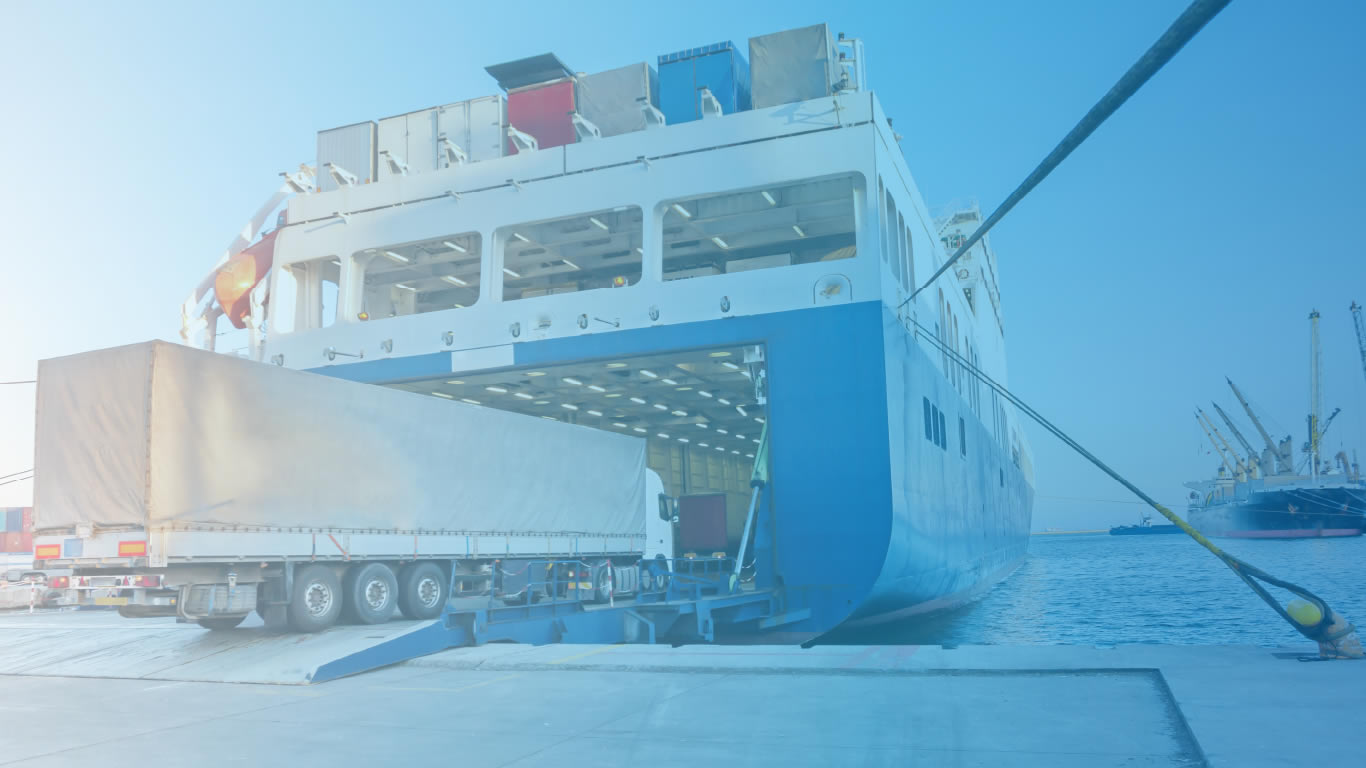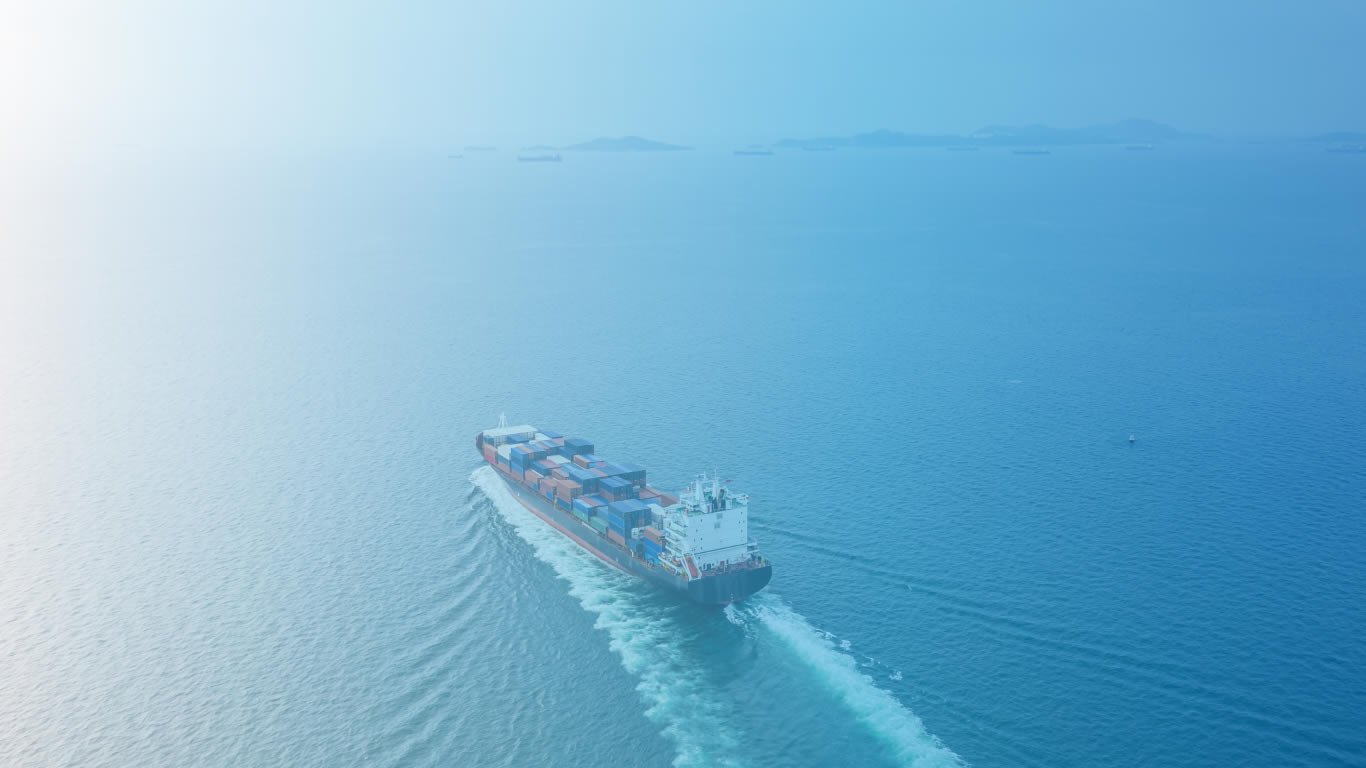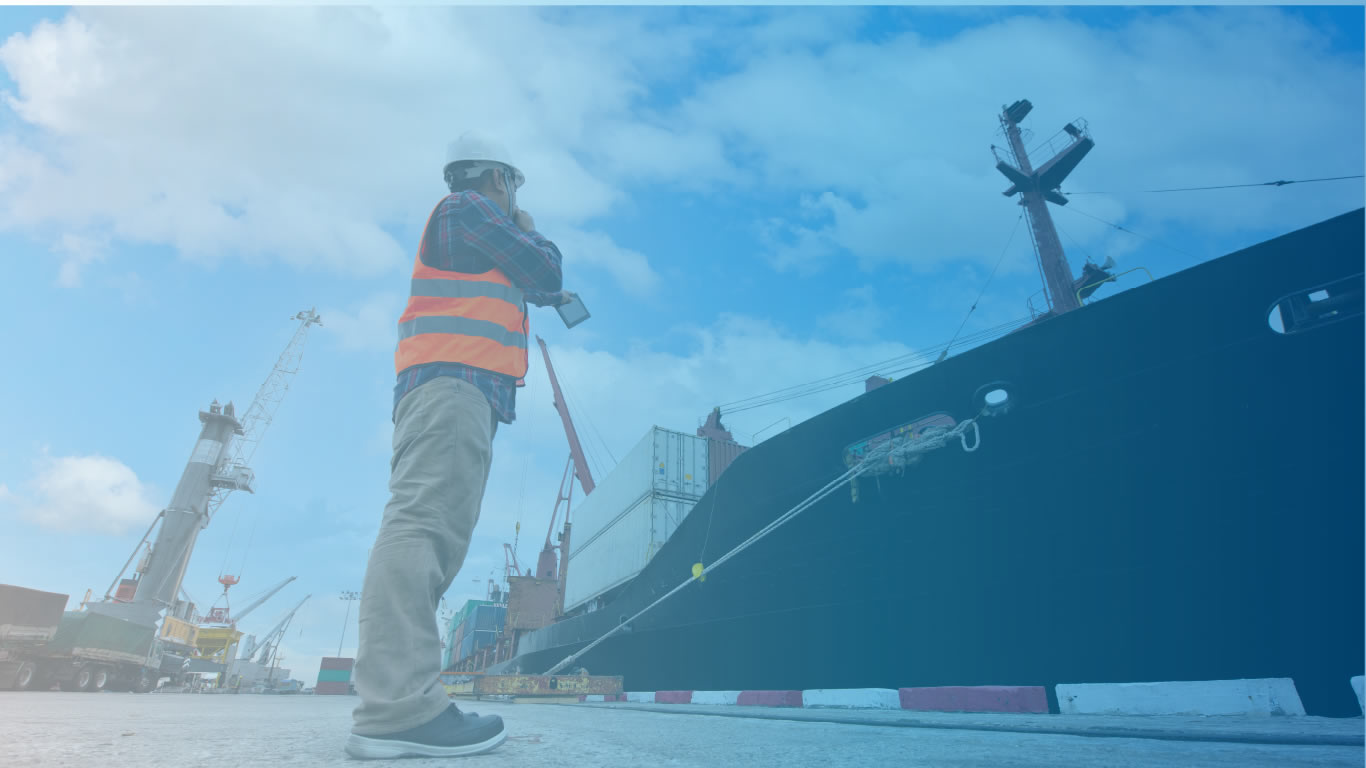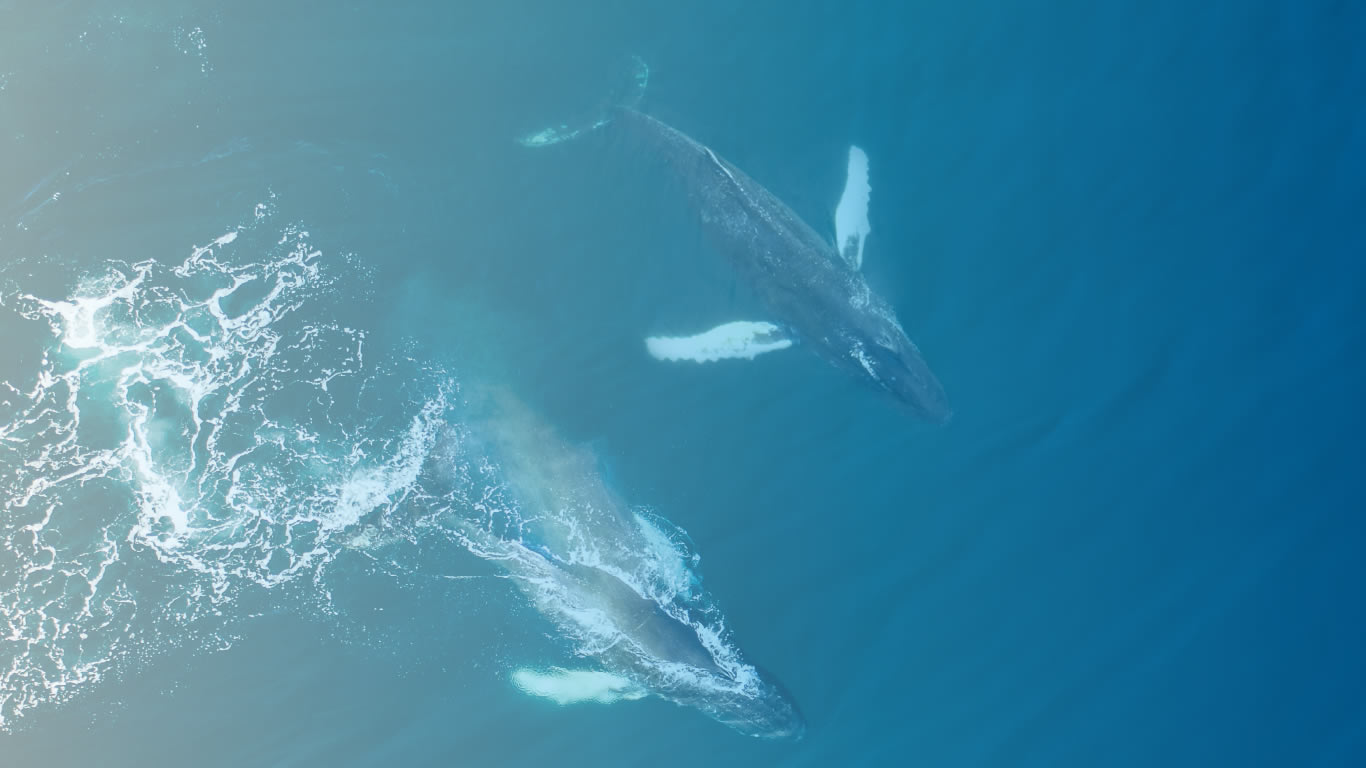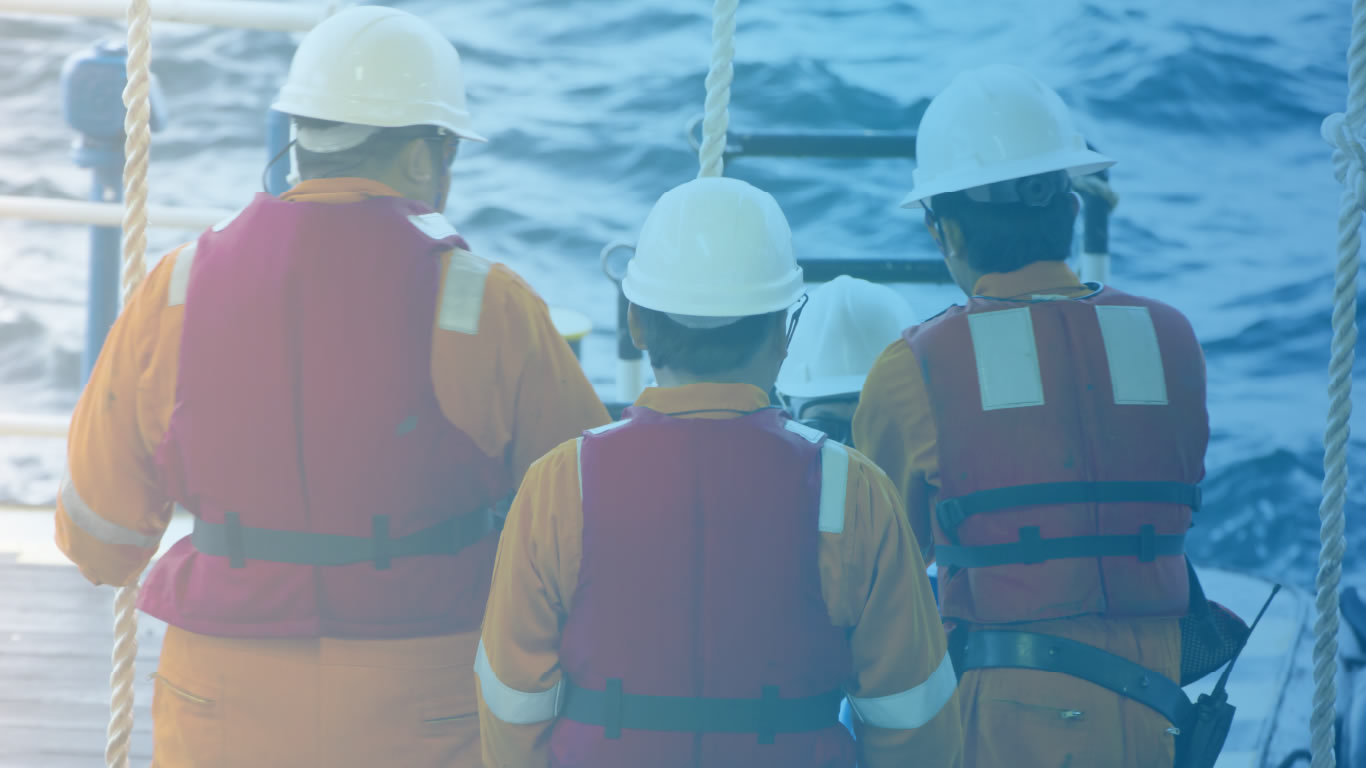The EU Maritime Profile - environment

The EU aims to be climate-neutral by 2050, meaning that it will be an economy with net-zero greenhouse gas emissions. This objective is at the heart of the European Green Deal and in line with the EU’s commitment to global climate action under the Paris Agreement.
Today, shipping is one of the modes of transport with the lowest carbon dioxide (CO2) emissions per distance and weight carried. Despite this, pollution derived from shipping activities has profound implications for air and water quality, and marine and estuarine biodiversity. Different ship types, operational profiles, cargoes carried, fuels consumed, materials used, arrangements, and control systems make vessels highly complex systems also from an environmental point of view.
This section currently gives data on emissions from ships in the EU in relation to greenhouse gases, air pollutants, underwater radiated noise, water discharges and shows statistics on: inspections of ships to check if low sulphur fuels are being used, compliance with sulphur requirements per region and use of low emissions fuels and alternative technologies.
MRV Reported CO2 emissions from ships in the EU
Carbon dioxide (CO2) emissions at the ship’s stack are directly related to the oxidation process of the carbon chains present in the fuels and used on board for combustion. This is defined as the tank to wake (TtW) emissions. However, on a life cycle analysis basis, the overall CO2 emissions also depend on the well to tank (WtT) part, i.e. the CO2 emissions resulting from – inter-alia – the sourcing, production and distribution of the fuels. The monitoring, reporting and verification Regulation (EU) 2015/757 is the EU instrument that introduced a European system for the monitoring, reporting and verification (MRV) of CO2 emissions from shipping. Its aim is to increase transparency about emissions produced from the shipping sector and to create an incentive to reduce them. Since 1st January 2018, shipowners are required to monitor and report CO2 emissions from ships. The monitoring applies to all seagoing ships above 5,000 GT which call or depart from an EU port. Despite limiting the monitoring requirements to large ships, the Regulation covers around 90% of all CO2 emissions, whilst only including around 55% of all ships calling into EEA ports.
The latest MRV data show that CO2 emissions reported for the year 2023 were lower than in previous years, 7.9% 2022 levels and around 13% lower than in pre-COVID years (i.e. 2018 and 2019), when emissions from the United Kingdom were still included. CO2 emissions in 2023 are comparable to those reported in 2021, a year still affected by the lingering impact of the COVID-19 crisis.
Since the entry into force of the MRV system, 2019 remains the year with the highest total CO2 emissions on record. The sharpest year-on-year drop occurred in 2020 (–11.9%), driven by the pandemic’s economic effects. Emissions partially recovered in 2021, although comparisons with 2019 are complicated by the UK’s withdrawal from the EU and resulting changes in MRV scope. In 2022, emissions rebounded further amid ongoing economic recovery and the geopolitical impact of Russia’s war of aggression against Ukraine.
Overall CO2 emissions from models
The modelled data on emissions from ships reported below, represents estimates of CO2 emissions for all shipping activity, without any restriction of GT. In addition the model data also accounts for ships movements for waters around the EU. Therefore, this dataset is not to be compared directly with the MRV data (i.e. 145 CO2 million tons in 2018, 146 CO2 million tons in 2019 and 120 million tons in 2020 at EU level), as differences are to be expected in the amounts reported under the MRV system and the model emissions underneath. A full explanation of the differences between the CO2 emissions as accounted from MRV, the UNFCCC inventory system and the modelled data is available in the European Maritime Transport Environmental Report 2025.
CO2 emissions result from the oxidation of carbon-based fuel in the combustion chamber of a ship’s energy system. These emissions are therefore directly linked to fossil fuel consumption and the overall volume of maritime traffic. Despite seasonal fluctuations, some of which are artificially amplified due to the model*, the overall trend at the European level shows a gradual increase in CO2 emissions until 2019, followed by a sharp decline in 2020, the year of the COVID-19 pandemic. Emissions then rose again in 2022, before showing a gradual decrease in both 2023 and 2024.
* Ship Traffic Emission Assessment Model (STEAM), Finnish Meteorological Institute
More figures from the analysis of CO2 emissions can be found in the European Maritime Transport Environmental Report 2025.
Overall CO2 emissions from UNFCCC inventory
The UNFCCC inventory provides the official reference for greenhouse gas emissions reported by EU Member States. When viewed in this broader context, shipping represented 13.4% of all transport sector CO2 emissions in the EU in 2023, compared with 14.2% in 2022.
In relation to total EU CO2 emissions, the maritime share was 5.5% in 2023, while in 2022 it ranged between 3–4%. These figures place maritime transport within the broader framework of transport and overall EU emissions, complementing the MRV and modelled datasets presented above.
The full EU UNFCCC greenhouse gas inventory dataset is available from the European Environment Agency (EEA) here.
SOx Emissions
The generation of Sulphur Oxides (SOx) from ships is heavily dependent on the sulphur content of the fuels used on board for combustion. During the combustion in the ship’s engines, the sulphur present in the fuel is oxidized forming SOx. The higher the sulphur content the higher the resulting SOx, hence the curbing of Sulphur Oxides from shipping is made through limiting the sulphur content of marine fuels. The Sulphur Directive 2016/802 is the only EU instrument directly regulating the prevention of air pollution from ships. defined for emissions. Therefore, although there is no specific target on SOx reductions, this indicator can show the impact of this legislation over time in reducing emissions. Therefore, although there is no specific target on SOx reductions, this indicator can show the impact of this legislation over time in reducing direct emissions. This is particularly relevant as there are important milestones in the application of the rules such as the requirements to limit the sulphur content in marine fuels to 0,10% m/m while at berth introduced in July 2010, the introduction of Sulphur Emission Control Areas in the Baltic Sea and North Sea in January 2015 and the associated limit of 0,10% m/m in the sulphur content, and more recently the implementation of a global sulphur cap which entered into force in January 2020, where the limit is set to 0,50% m/m and a Sulphur Emission Control Area in the Mediterranean Sea in May 2025.
SOx emissions are strictly connected to the sulphur content of the fuel consumed and, therefore, to the volume of maritime traffic. Despite seasonal fluctuations, some of which are artificially amplified due to the model*, and sharp reductions in specific regions like the Baltic and the North Sea, the overall trend at European level shows a slight decrease in SOx emissions until 2016, followed by a gradual increase until the end of 2019, just before the introduction of further limits in the sulphur content of fuels.
The combined effect of new legislative measures and the COVID-19 pandemic is clearly visible from 2020 onwards, when emissions dropped sharply across the EU, by almost 70%, and then stabilised at lower levels.
At the regional level, a notable drop in SOx emissions occurred in 2015 in both the Baltic and North Seas, corresponding with the introduction of Sulphur Emission Control Areas (SECAs). In contrast, such a reduction is not yet observed in the Atlantic, Mediterranean, or Black Sea regions, where SECA implementation is either pending or still evolving (e.g. the Mediterranean from 1 May 2025 and the North-East Atlantic expected from 2027).
More figures from the analysis of SOx emissions can be found in the European Maritime Transport Environmental Report 2025.
* Ship Traffic Emission Assessment Model (STEAM), Finnish Meteorological Institute.
NOx Emissions
Nitrogen naturally present in atmospheric air is oxidized during the combustion process on ship’s engines resulting in Nitrogen Oxides (NOx). The higher the temperature and pressure in the combustion chamber, the higher the NOx formation. NOx emissions from ships are regulated through the international MARPOL Convention in its Annex VI. Depending on the construction date of the ship, the engine’s rating speed, and the area of operation, different NOx limits apply. The limits are applied in three Tiers (Tier I applies to engines on ships constructed on or after 1 January 2002; Tier II applies to engines on ships constructed on, or after, 1st January 2012; and Tier III applies to engines on ships constructed on or after 1st January 2016 if operating in North America or 1st January 2021 if operating in the Baltic Sea and North Sea). The most stringent of those, the Tier III applies in the NOx Emission Control Areas (NECA). In the EU, the Baltic Sea and the North Sea became NECAs on 1st January 2021. However, these requirements apply only to ships constructed after that date.
Notwithstanding seasonal fluctuations, some of which are artificially amplified due to the model*, the overall total trend at European level sees a slight increase in NOx emissions until the end of 2019. This small increase sees maximum values in 2016 and 2019 and reflected in the Atlantic, Mediterranean Sea, North Sea and Baltic Sea regional values, while for the Black Sea the trend is reversed. These trends mirror the evolution of trade and maritime traffic, as during the period considered there have been no major changes in requirements. The 2019 and 2020 decrease can be attributed to the COVID pandemic and the resulting dramatic drop in ship traffic.
* Ship Traffic Emission Assessment Model (STEAM), Finnish Meteorological Institute
Underwater Radiated Noise
While Underwater Radiated Noise (URN), is increasingly recognised as a significant and pervasive pollutant affecting marine ecosystems, there is no policy regulating emissions at EU level. Nevertheless, anthropogenic emissions caused by the offshore exploration industry (impulsive noise) and commercial shipping (continuous noise) are now becoming a focus area within the implementation of the Marine Strategy Framework Directive (MSFD). Threshold values to assess the extent to which good environmental status is achieved for underwater radiated noise are currently being developed.
Discharge Waters
Water pollution from ship operations arises from multiple onboard subsystems, producing discharges that may contain various pollutants—such as black and grey water, bilge water, tank cleaning water, and residues from exhaust gas cleaning systems (EGCS). While these discharges are regulated under international frameworks like MARPOL, they can still negatively impact the marine environment through several mechanisms, including the release of harmful chemicals, introduction of invasive species via ballast water, and nutrient enrichment leading to eutrophication. Addressing these impacts remains a key challenge for sustainable maritime operations.
Discharges from open-loop exhaust gas cleaning systems (EGCS; scrubbers) account for 98% of water discharges, with the remaining 2% comprising of grey waters, sewage, bilge water, and closed-loop EGCS.
Since 2020, water discharges from open-loop scrubbers have remained stable in previously established Sulphur Emission Control Areas (SECAs) and increased in the North-East Atlantic Ocean, Black Sea, and Mediterranean Sea. This rise reflects compliance with the EU and IMO sulphur emission regulations which have driven significant increase in scrubber installations due to their lower compliance cost for ships.
The implementation of the IMO 2020 global sulphur cap, the introduction of Sulphur ECAs, as well as the implementation of the Sulphur Directive, have successfully reduced SOx emissions to the atmosphere. However, studies indicate a real risk of pollution displacement from air to water, particularly through the release of discharge waters from EGCSs in the marine environment, that can potentially adversely affect marine life, for example by increasing zooplankton mortality due to the diverse pollutants released.
The amount of grey water discharged has increased by 41% between 2014 and 2023, mainly because of the growing number of cruise ships in operation. The highest discharge volumes on the freight side come from tankers, with an increase of 25% since 2014.
Monitoring pollution events
Potential pollution events in the EU are monitored by CleanSeaNet, the European satellite-based spill monitoring and vessel detection service developed and operated by EMSA. The service delivers around 7 000 satellite images per year and monitors approximately 1.2 million km² annually.
Inspections on board ships to check the use of low sulphur fuels
SO2 is a pollutant emitted by the combustion of marine fuel that can affect the respiratory system and the functions of the lungs, and can cause irritation of the eyes. It also contributes to acid deposition, which, in turn, can lead to potential changes in soil and water quality of coastal and port areas.
To reduce SO2 emissions from ships, the sulphur content of marine fuels has been regulated in the EU since 1999 and continuously reduced since then.
Monitoring is key for the effective and timely implementation of the various sets of laws, rules and standards. To aid EU Member States in their efforts to ensure that sulphur emissions from ships are below the required limits, EMSA developed a platform, THETIS-EU, to record and exchange the results of individual inspections performed by Member States on board ships calling at their ports.
Since 1 January 2015, when the system became operational, the results of over 60 000 specific inspections on ships (an average of 700-900 per month) have been recorded in THETIS-EU.
Compliance with sulphur requirements per region
EU and international legislation already sets out strict limits on the sulphur content in fuels, but those limits are even more restrictive in Sulphur Emission Control Areas (SECAs). These are sea areas created by the International Maritime Organization under the International Convention for the Prevention of Pollution from Ships (MARPOL), where limits are applied to reduce sulphur oxide (SOx) emissions.
There are currently three SECAs in the EU: the Baltic Sea area, the Mediterranean Sea and the North Sea area. Since the SECAs were introduced, SOx emissions have largely decreased in the North and Baltic Sea zones. Inspections carried out clearly demonstrate that the sulphur content in fuel samples was compliant at rates above 98%.
Low-emission fuels and alternative technologies
Maritime transport has traditionally relied on the use of conventional fossil fuels. Now, however, regulatory developments aiming to reduce air emissions, including air pollutants, and the need to contribute to greenhouse gas (GHG) reductions, have led to more interest in the use of low-sulphur or -emission technologies, alternative or low-carbon fuels and other sustainable fuel and energy-efficient technologies.
Several alternative fuels and energy technologies have the potential to reduce the maritime transport sector’s impact on the environment, in terms of air emissions (both greenhouse gas and air pollution).
Batteries are beginning to be used more and more to complement heavy-duty onboard ship operations like propulsion and providing energy to different auxiliary systems. The potential environmental benefit of battery-equipped vessels is very high, and may lead to the removal of carbon dioxide, nitrogen oxide, sulphur oxide and particulate matter emissions from ships. The number of battery-equipped ships trading in the EU is slowly but steadily increasing:
On-shore power (OPS) can serve as a clean power supply for maritime transport, thus drastically reducing carbon dioxide, nitrogen oxide, sulphur oxide and particulate matter emissions while at berth. However, the availability of “clean/green” electricity installations within ports, as well as the OPS readiness of ships is under progress.
A number of EU and EEA ports are now equipped with onshore power supplies for ships to use while at berth.
The total number of berths varies between ports, with some having more than one berth:
The use of liquified natural gas (LNG) as fuel substantially reduces air pollutants such as sulphur oxides and particulate matter, and to a certain extent can also contribute to greenhouse gas reduction under certain conditions. However, under certain conditions, methane leakage associated with LNG usage can conversely result in an increase in greenhouse gas emissions.
Exhaust gas cleaning systems (EGCSs), commonly referred to as ‘scrubbers’, are designed to remove sulphur oxide matter from the exhaust gases resulting from the combustion processes on board ships. EGCSs use water to remove the pollutants, resulting in overboard discharges to the marine environment. There is work at international level on the evaluation and harmonisation of rules and guidance on the discharge of water from EGCS into the aquatic environment, including conditions and areas.
Ship Recycling
Ship recycling registered a peak worldwide in 2021 with 796 ships flying a non-EU flag recycled and 51 ships with an EU Member State flag. The total Light Displacement Tonnage (LDT) recycled in 2021 for non-EU flagged vessel has exceeded the 6 million tonnes (LDT is an indication of is the actual total weight of the vessel, defined as the weight of the ship with all its permanent equipment, excluding the weight of cargo, fuel, water, ballast, stores, passengers, crew).
For an increasing number of EU flagged ships, the change of flag from EU to non-EU flags, one year before the ship goes for recycling, seems to be a practice that reached a peak in 2019.
Find out more about our work

